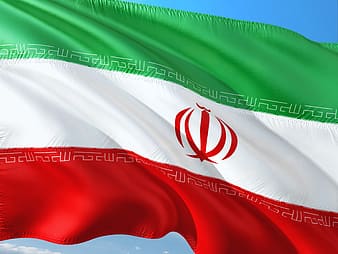In the next few days, the latest quarterly report on Iran’s nuclear program by the International Atomic Energy Agency (IAEA) is expected to become public. It will make headlines even if it doesn’t contain any news.
BY: SIMON HENDERSON | thehill.com

A mega-row is emerging between the United States and its major European allies — Britain, Germany and France — over Washington’s decision to stop issuing waivers so that foreign companies can help Iran’s civil nuclear activities. In a joint statement on Saturday, the three European countries said: “We deeply regret the U.S. decision.”
The Trump administration regards the 2015 Obama-era Joint Comprehensive Plan of Action (JCPOA) as conceding too much to Tehran. By contrast, London, Berlin and Paris judge it as being a diplomatic achievement worth building on. The 2018 U.S. withdrawal from the JCPOA, plus additional sanctions since, has been matched by Iran regarding itself as no longer bound by its limitations. Whether Iran has returned to continue its one-time nuclear weapon research is a detail unknown to the general public and, worryingly, perhaps even unclear to the U.S. intelligence community.
The document from the world’s nuclear watchdog is never an easy read but, in essence, it reports on Iran’s permitted activities. The purpose of the report is to reflect on how Iran’s right to civil nuclear technology may be at odds with its treaty obligations that such activities should not be used for military purposes — in plain English, making an atomic bomb.
The IAEA checks on the nuclear programs of all its 171 members but Iran is inspected much more than most. Visiting inspectors have even hired an aircraft so that their travel to Iranian facilities is not disrupted by the coronavirus. Apart from questioning Iranian personnel, often less than productively, they look at what remote monitoring systems and cameras may have detected.
The writing style of the IAEA inspectors is legalistic and makes no allowances for the very limited knowledge of nuclear physics, beyond atoms and molecules, that most of us have, but the principle concerns are:
- The size of Iran’s stockpile of enriched uranium: If this is the amount needed for one atomic bomb, the fear is that Tehran could “break out” and, even without a test explosion, declare itself a nuclear power. At present, Iran probably does have enough such uranium but it is not sufficiently concentrated (“high-enriched”) to be used.
- The number and type of centrifuges that Iran has in operation: Most of Iran’s centrifuges are old IR-1 types that are not good enough to make high-enriched uranium. It has about 1,000 IR-2m types that are more efficient but may not be able to produce HEU to the concentration needed for a bomb.
- The IAEA’s access to a couple of sites, which Iran has not declared as nuclear: Samples of uranium have been recovered from two sites, which analyses show have been processed in some way. The IAEA is seeking an explanation.
Other concerns are:
- Progress on converting the Arak research reactor so that it cannot produce plutonium, another potential nuclear explosive. Arak is one of the sites where such work will be impacted by the withdrawal of the waivers.
- Iran’s continuing work on missiles. Though not part of the IAEA’s responsibility, there is international concern that Iran launched a crude military satellite in April. Previous satellite efforts have been notionally civilian but this launch was by the Islamic Revolutionary Guard Corps, the hardliners of the regime. Being able to launch a satellite is halfway to being able to fire a nuclear-tipped missile at an adversary in the Middle East. The other half of the problem is designing a warhead that doesn’t burn up on re-entry into the atmosphere, vaporizing its nuclear weapon. Iran is assumed to be working on overcoming this hurdle.
A reminder of Iran’s possible closeness to success was the May 28 celebrations in Pakistan of Youm-e-Takbeer — Day of Greatness — the anniversary of its first test in 1998. A Pakistani newspaper carried a giant picture of the nuclear test and the previous month’s successful first missile firing, along with a photo of Dr. A.Q. Khan, the disgraced scientist credited with the achievement, who also supplied centrifuges to Iran.
